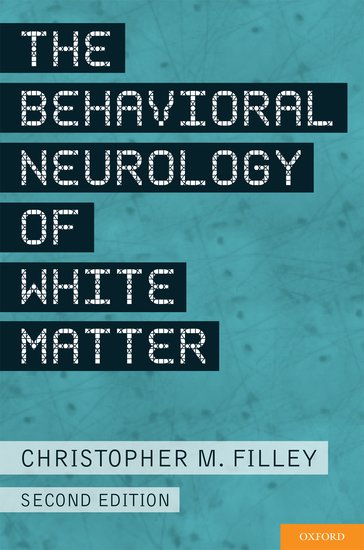Filley’s contention, elucidated in many previous journal articles and summarised in this book, is that disorders of white matter may be associated with a neurobehavioural syndrome with prominent cognitive impairments, sometimes amounting to dementia, which is in many ways akin to, and yet different, from subcortical dementia. The key features are cognitive slowing, executive dysfunction, impairment of sustained attention, impaired memory retrieval and visuospatial deficits. The relatively preserved functions are procedural memory and language (white matter integrity correlates with full-scale and performance, but not verbal, IQ), along with neuropsychiatric aspects (one might add the relative infrequency of epileptic seizures) and, unlike subcortical dementia, extrapyramidal function. The macroconnectivity of white matter is essential for information transfer across the brain, and contrasts with information processing microconnectivity within the grey matter; together they form complementary parts of the brain “connectome”.
The brief first section examines the nature of white matter – myelin, saltatory impulse conduction, and the critical recent contributions of various neuroimaging modalities (MRS, MTI, DTI) in identifying white matter abnormalities (including in what was previously deemed “normal appearing white matter”). Examples of cognitive impairment in specific white matter disorders are cited in the second section; these encompass genetic, demyelinating, infectious, inflammatory, toxic, metabolic, vascular, traumatic, neoplastic and hydrocephalic disorders of both paediatric and adult provenance. The third section examines white matter in neurodegenerative diseases (including Alzheimer’s disease, for which a “myelin hypothesis” has been developed), focal neurobehavioural syndromes (e.g. amnesia, aphasia), neuropsychiatric and neurological features. There is a final summation from the connectionist perspective of the behavioural neurology of white matter.
I must “fess up” and say that I never read the first edition of this book (published 2001), but I do not think the omission diminished my pleasure in reading this update. Filley has a fluent writing style which carries the reader easily along. While more might have been said about some conditions (e.g. cerebral amyloid angiopathy) and the quality of some MR images left something to be desired (many dating from neuroimaging atlases of the 1980s and 1990s), this is a stimulating read – well crafted, and thoroughly recommended for anyone with an interest in cognitive disorders, white matter disorders, or both.
